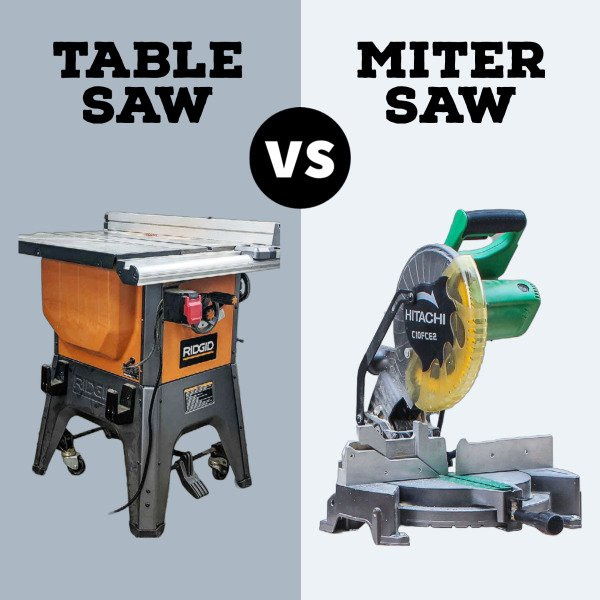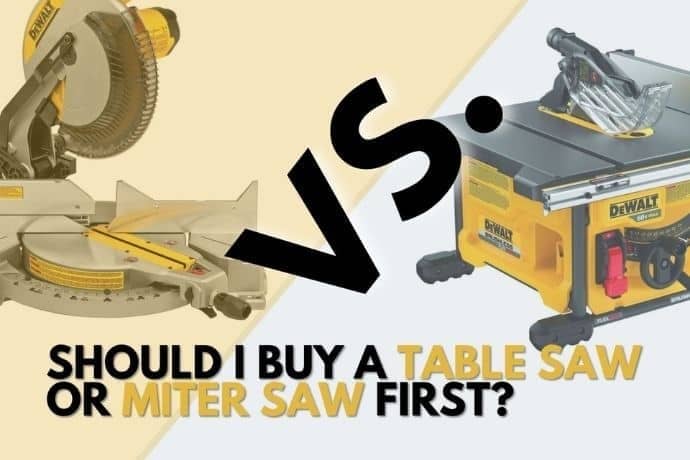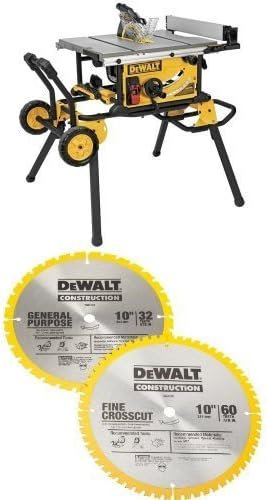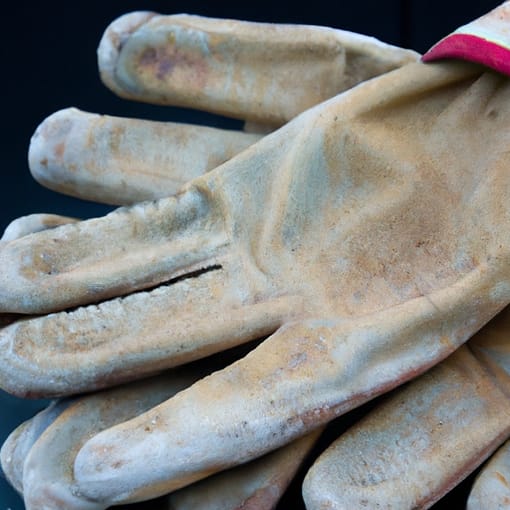If you’re someone embarking on a journey into the world of woodworking, you’ve probably found yourself pondering the dilemma: do I really need a table saw as well as a miter saw? It’s a question that has crossed the minds of many DIY enthusiasts and professionals alike. While both tools serve unique purposes, understanding their differences and comparing them to your specific woodworking needs can help you make an informed decision. So, let’s clear the sawdust and explore the pros and cons of each to determine if you truly need one, the other, or both in your workshop.
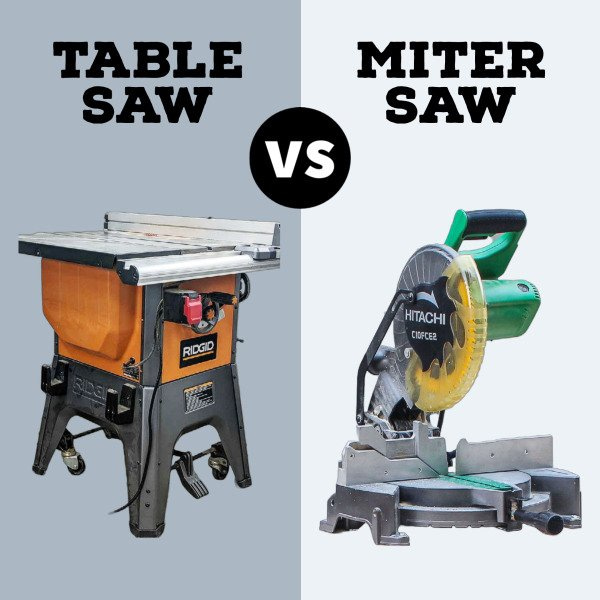
Benefits of a Table Saw
Precise and accurate cuts
One of the main benefits of a table saw is its ability to make precise and accurate cuts. The table saw is designed with a flat and level surface, along with a fence and miter gauge, which allows for precise and straight cuts. This is especially useful when working on projects that require straight and uniform cuts, such as building furniture or cabinetry.
Versatility with different materials
Another advantage of a table saw is its versatility in cutting different materials. Whether you’re working with wood, plywood, or even plastic and metal, a table saw can handle a wide range of materials. The adjustable blade height and different types of blades available allow you to customize the tool for each specific material and achieve optimal results.
Ability to make wide and rip cuts
Table saws excel in making wide and rip cuts, which are cuts made parallel to the grain of the material. With its powerful motor and large cutting capacity, a table saw can easily handle cutting through thick and wide boards. This feature is particularly useful when working on projects that require cutting large sheets of plywood or making long rip cuts.
Smoother and cleaner cuts
Table saws are known for their ability to produce smoother and cleaner cuts compared to other cutting tools. The stability provided by the table surface, along with the precision of the blade and the use of accessories such as push sticks and feather boards, ensures that the cuts are clean and free from splintering. This is crucial when working on projects that require high-quality finishes or when joining multiple pieces of wood together.
Easier to make repeat cuts
When it comes to making repeat cuts, a table saw is a valuable tool. By setting the fence at a specific distance from the blade, you can easily make multiple cuts of the same size without the need for measuring each time. This not only saves time but also ensures that each piece is cut to the same dimensions, leading to more accurate and consistent results.
Benefits of a Miter Saw
Ideal for crosscuts and miter cuts
A miter saw is specifically designed for crosscuts and miter cuts, making it an essential tool for woodworking and carpentry projects. Its rotating circular blade can be angled and tilted to make precise cuts at various angles, allowing for accurate joinery and framing work.
Ease of use and quick setup
One of the major advantages of a miter saw is its ease of use and quick setup. With a simple point-and-shoot mechanism, you can easily position the material and make quick and accurate cuts. The miter saw’s intuitive design and user-friendly features, such as the laser guide and built-in scales, make it a suitable choice for both beginners and experienced users.
Perfect for angled cuts
Miter saws are especially useful when it comes to making angled cuts. Whether you need to cut crown molding or create bevel cuts for furniture pieces, a miter saw allows you to adjust the angle precisely and achieve clean and precise cuts. This versatility in cutting angles makes it a preferred tool for projects that involve angled joinery and intricate design details.
Portability and space-saving
Compared to a table saw, a miter saw is generally more portable and takes up less space in your workshop. With its compact design and lightweight construction, a miter saw can be easily transported to different job sites or stored away when not in use. This makes it a convenient option for those who have limited space or need to work in various locations.
Great for trim work
Miter saws are particularly well-suited for trim work, such as installing baseboards, crown molding, or door casings. The ability to make precise and angled cuts ensures that the trim pieces fit together seamlessly, giving your project a professional and finished look. The miter saw’s accuracy and versatility in cutting angles make it an indispensable tool for any trim carpentry work.
Differences Between Table Saw and Miter Saw
Types of cuts
The main difference between a table saw and a miter saw lies in the types of cuts they can make. While a table saw is excellent for making straight and rip cuts, a miter saw specializes in crosscuts and angled cuts. Understanding the different types of cuts needed for your projects will help you determine which tool is better suited for the task at hand.
Cutting angles
While a table saw can make angled cuts with the use of accessories like a miter gauge, it is not as precise or efficient as a miter saw. A miter saw allows for quick and accurate adjustment of angles, making it the preferred choice for projects that involve various cutting angles, such as framing or trim work.
Accuracy and precision
Both table saws and miter saws can provide accurate and precise cuts, but their mechanisms differ. A table saw relies on the stability and precision of the table surface, fence, and miter gauge to achieve accuracy. On the other hand, a miter saw’s rotating blade and adjustable angles allow for precise and repeatable cuts. Depending on the level of precision required for your projects, you may opt for one tool over the other.
Portability and space requirements
When it comes to portability, a miter saw has the upper hand. With its lightweight and compact design, it can be easily transported and stored. In contrast, a table saw is typically heavier and bulkier, requiring a dedicated space in your workshop. Consider the mobility and space requirements of your projects before choosing between the two tools.
Working with different materials
While both table saws and miter saws can handle a variety of materials, their strengths lie in different areas. A table saw is ideal for cutting large and heavy materials, such as plywood or thick boards. On the other hand, a miter saw is better suited for lighter materials and precision cuts, making it a go-to tool for working with trim pieces and delicate materials.
When to Use a Table Saw
Making long rip cuts
If your project involves cutting long, straight boards or large sheets of material parallel to the grain, a table saw is the ideal tool. Its extended table surface and adjustable fence provide stability and accuracy, allowing for clean and precise rip cuts.
Working with large sheets of material
When dealing with large sheets of plywood or other sheet materials, a table saw’s wide cutting capacity and stable cutting surface make it the tool of choice. It provides support for the entire sheet, ensuring that the cuts are straight and uniform.
Creating dado or groove cuts
Dado or groove cuts are essential for joinery work, such as creating shelves or assembling cabinets. A table saw equipped with a dado blade or a dado set allows you to make these cuts with precision and efficiency.
Repeating cuts accurately
If your project requires making multiple cuts of the same size, a table saw excels in providing consistency and accuracy. By setting the fence at the desired distance from the blade, you can quickly and effortlessly make repeat cuts, ensuring uniformity throughout your project.
Cutting thick and heavy materials
While a miter saw can handle certain thicknesses, a table saw is better equipped to cut through thick and heavy materials. If your project involves working with solid wood or thick boards, a table saw’s powerful motor and wide cutting capacity make it the better choice.
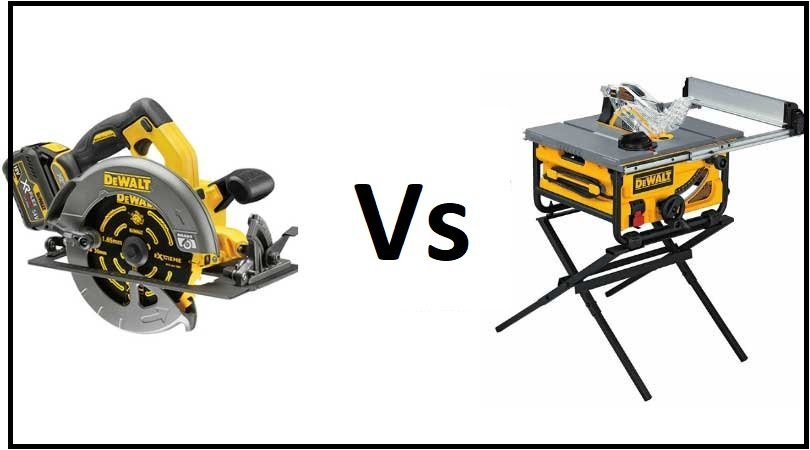
When to Use a Miter Saw
Crosscutting and mitering
A miter saw is specifically designed for crosscuts and miter cuts, making it the go-to tool for projects that require precise and angled cuts. Whether you’re working on furniture pieces or framing, a miter saw allows you to achieve clean and accurate cuts at various angles.
Trim work and molding
When it comes to trim work and molding installation, a miter saw is an essential tool. Its ability to make angled cuts with precision ensures that your trim pieces fit together seamlessly, giving your project a professional finish.
Making angled cuts
If your project involves making cuts at specific angles, such as cutting rafters or beveling edges, a miter saw is the tool for the job. Its adjustable angles and easy-to-use features make it a versatile tool for any project that requires angled cuts.
Creating bevel cuts
For projects that involve creating bevel cuts, such as joining pieces at an angle to make boxes or frames, a miter saw is invaluable. Its ability to tilt the blade and make precise bevel cuts makes it the preferred tool for producing clean and accurate beveled edges.
Working with smaller and lighter materials
Miter saws are especially suited for working with smaller and lighter materials. From trim pieces to delicate woodworking projects, a miter saw’s precision and control make it the perfect tool for achieving clean and accurate cuts.
Choosing the Right Tool for Your Projects
Consider the types of projects you typically work on
When deciding between a table saw and a miter saw, consider the types of projects you typically work on. If your projects involve a lot of crosscuts, angled cuts, and trim work, a miter saw is likely the better choice. If you find yourself needing to make long rip cuts, work with large sheets of material, or repeat cuts accurately, a table saw would be more suitable.
Evaluate the complexity and variety of cuts needed
Assess the complexity and variety of cuts needed for your projects. Are you primarily making straight cuts, or do you require precise angled cuts? Understanding the specific cutting requirements of your projects will help you determine which tool will best meet your needs.
Assess your available workspace and storage
Consider the size of your workshop and the available workspace. Table saws generally require more space due to their larger footprint, while miter saws are more compact and portable. If you have limited space or need to transport your tools to different locations, a miter saw may be a better fit.
Budget constraints
Take into account your budget constraints when deciding between a table saw and a miter saw. Table saws generally tend to be more expensive due to their size, power, and versatility. Miter saws, on the other hand, are typically more affordable. Consider your budget and the value you expect to derive from the tool before making a decision.
Consider the level of experience and skill
Your level of experience and skill should also be taken into consideration. Table saws can be more intimidating for beginners due to their powerful motors and the need for precise adjustments. Miter saws, with their ease of use and intuitive design, may be a better option for those who are less experienced or just starting out.
Cost Comparison
Price ranges for table saws
Table saws can range in price depending on their features, quality, and brand. Entry-level table saws can usually be found in the $200 to $400 range. Mid-range options with increased cutting capacity, power, and additional features can range from $400 to $800. Professional-grade table saws with advanced features and high durability can cost upwards of $1000 or more.
Price ranges for miter saws
Miter saws also vary in price based on their features and quality. Basic miter saws can be found in the $100 to $200 range, while mid-range options with improved cutting capacity and features range from $200 to $500. High-end miter saws, often with sliding capabilities and advanced cutting angles, can start from $500 and go up to $1000 or more.
Considerations when comparing costs
When comparing the costs of table saws and miter saws, it is important to consider the specific features and capabilities of each tool. Determine which features are necessary for your projects and budget accordingly. It is also worth noting that investing in a quality tool upfront can save you money in the long run through improved performance, durability, and reliability.
Potential savings with a combination of both
If your budget allows, owning both a table saw and a miter saw can provide significant benefits. While each tool has its own strengths, having both at your disposal allows for a wider range of cutting options and increased efficiency. Additionally, purchasing a combination of both tools may lead to potential savings, as certain projects may require the use of both saws simultaneously, eliminating the need for repeated setups and adjustments.
Safety Precautions and Features
Blade guard and anti-kickback pawls
Table saws and miter saws are equipped with blade guards and anti-kickback pawls as essential safety features. The blade guard helps protect your fingers from accidental contact with the spinning blade, while the anti-kickback pawls prevent the material from being forcefully thrown back towards you during cuts.
Blade changing and locking mechanisms
Both table saws and miter saws should have secure blade changing and locking mechanisms in place to ensure safe operation. These mechanisms prevent the blade from unexpectedly moving during use, reducing the risk of accidents or injuries.
Safety switches and emergency stop features
Both types of saws should come equipped with safety switches and emergency stop features. These enable you to quickly turn off the power or stop the blade’s rotation in case of an emergency or if you need to pause the cutting process.
Reliable dust collection system
A reliable dust collection system is an important safety feature for both table saws and miter saws. It helps to minimize the accumulation of sawdust and debris, which can pose health risks and impair visibility during cutting. Regularly cleaning the dust collection system and wearing appropriate personal protective equipment, such as a dust mask, is crucial for maintaining a safe and healthy working environment.
Safety accessories and personal protective equipment
In addition to the built-in safety features, it is important to use additional safety accessories and personal protective equipment (PPE) while operating both table saws and miter saws. Safety glasses, hearing protection, and appropriate clothing should always be worn to protect yourself from potential hazards and to ensure a safe working environment.
Space and Storage Considerations
Footprint and dimensions of table saw
Table saws generally have a larger footprint compared to miter saws. The size of a table saw can vary, but they typically take up more space due to the extended table surface, large cutting capacity, and the need for additional space to accommodate the stock being cut. Be sure to account for the dimensions of the table saw and provide ample clearance on all sides for safe operation.
Footprint and dimensions of miter saw
Miter saws have a more compact design and take up less space in your workshop. They are designed to sit on a tabletop or a miter saw stand and have a smaller footprint compared to table saws. However, it is still important to consider the dimensions of the miter saw, especially if you plan to use it for larger projects that require extended cutting capacity.
Space needed for proper operation
Both table saws and miter saws require adequate space for proper operation and safe usage. Ensure that you have enough room in your workshop to maneuver the material being cut, as well as space to move freely around the tool. Having enough space not only ensures safe operation but also increases productivity by allowing for efficient workflow.
Storage options and mobility
Consider the storage options and mobility of the tools when making your decision. Table saws are generally heavier and bulkier, requiring a dedicated space in your workshop or garage. Miter saws, being more compact and lightweight, are easier to store and can be transported more easily. If you plan to frequently move or transport your saw, a miter saw’s portability may be an important factor to consider.
Conclusion
Different tools serve different needs, and when it comes to choosing between a table saw and a miter saw, several factors need to be considered. Understanding the benefits each tool offers, as well as their differences in terms of the types of cuts, cutting angles, accuracy, and portability, is crucial for making an informed decision.
Assessing the types of projects you typically work on, the complexity and variety of cuts needed, your available workspace and storage, budget constraints, and your level of experience and skill are all important considerations. By weighing these factors and comparing the costs, you can determine which tool is most suitable for your specific needs.
It’s worth noting that if your budget allows, owning both a table saw and a miter saw can provide significant benefits in terms of versatility and efficiency. Both tools offer unique advantages and can complement each other in tackling a wide range of projects.
Remember, regardless of the tool you choose, safety should always be a priority. Familiarize yourself with the safety precautions and features of each tool, use appropriate personal protective equipment, and ensure a safe working environment. With the right tool and proper safety measures in place, you can confidently tackle your woodworking and carpentry projects.
